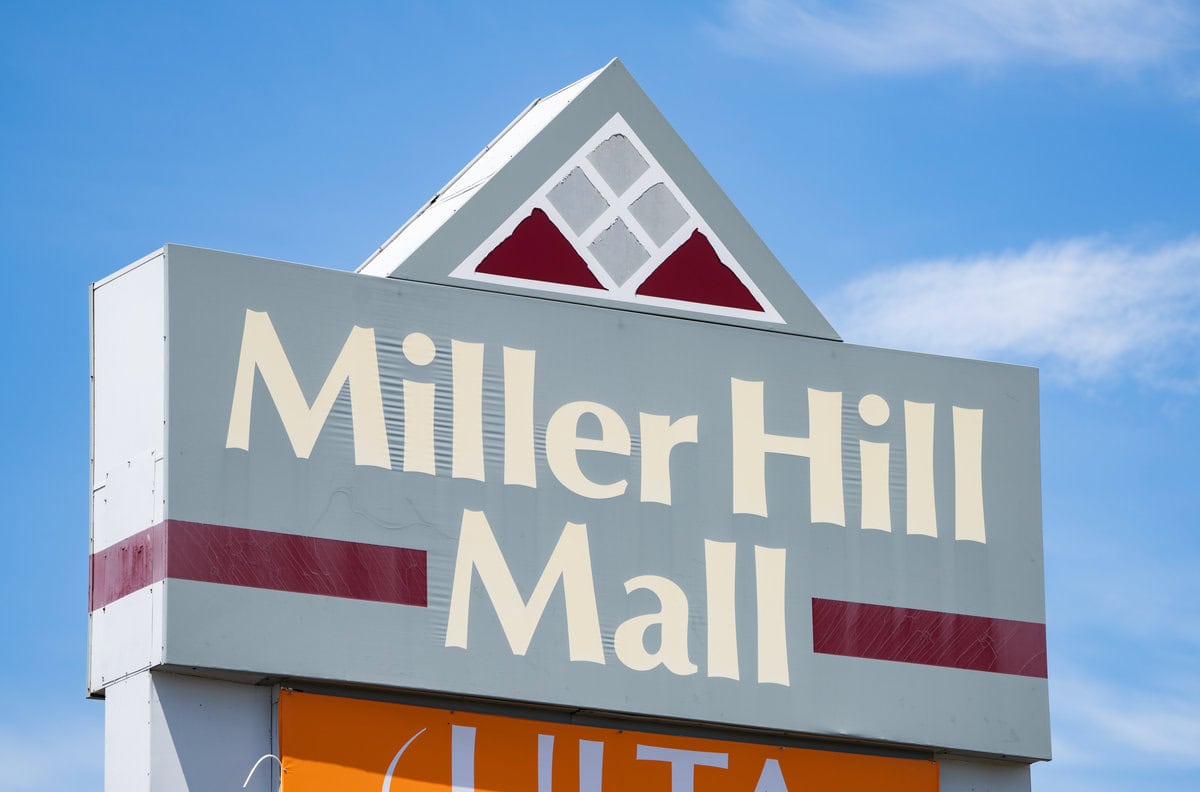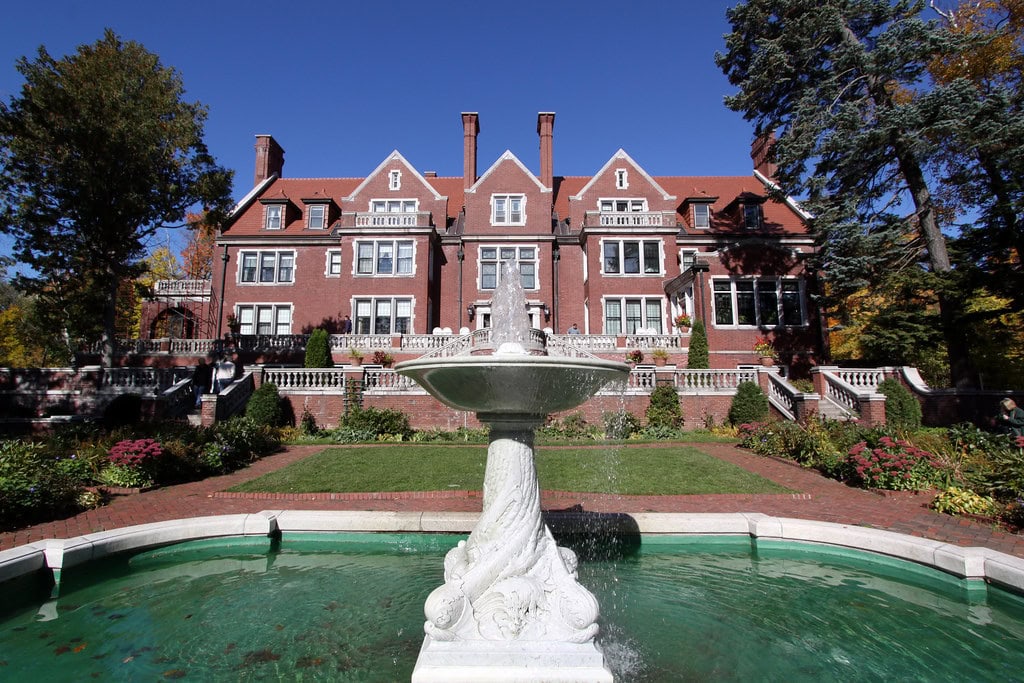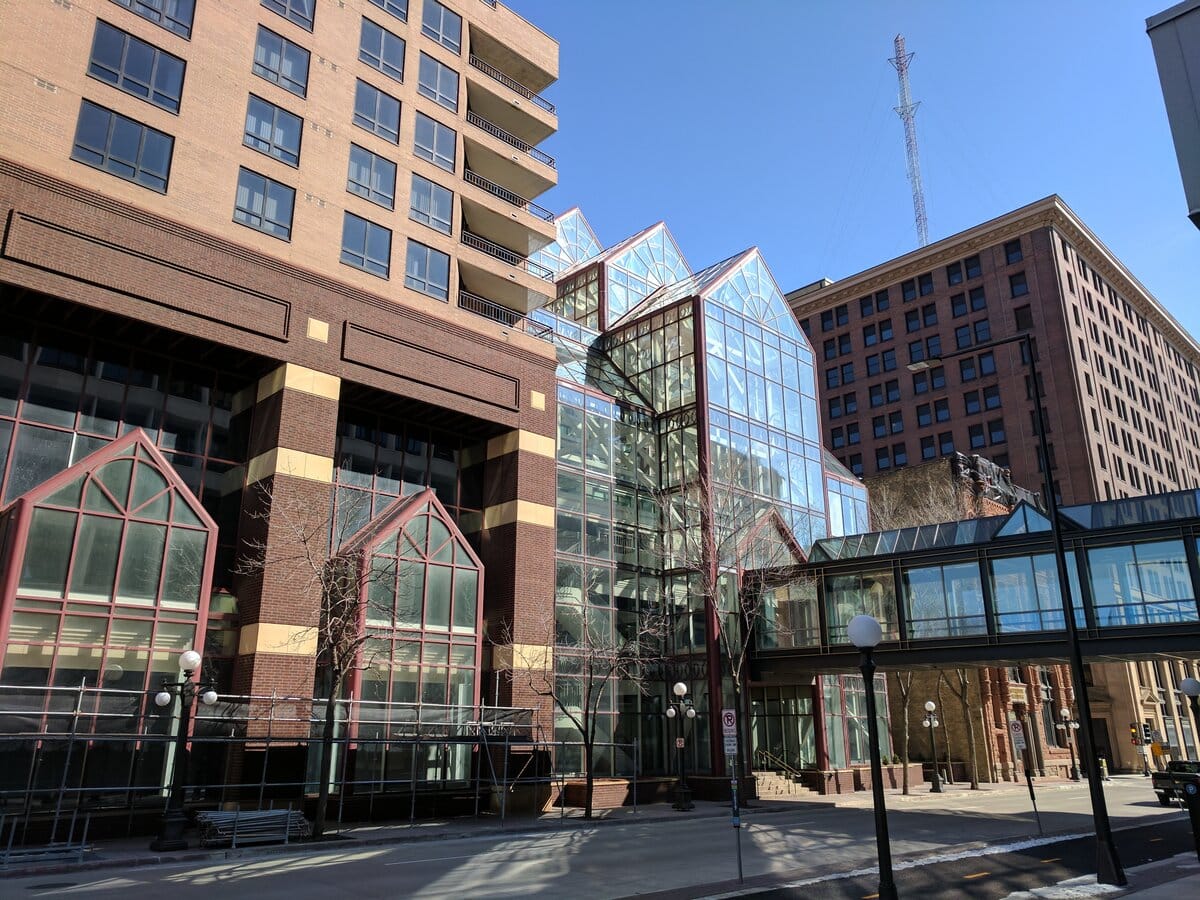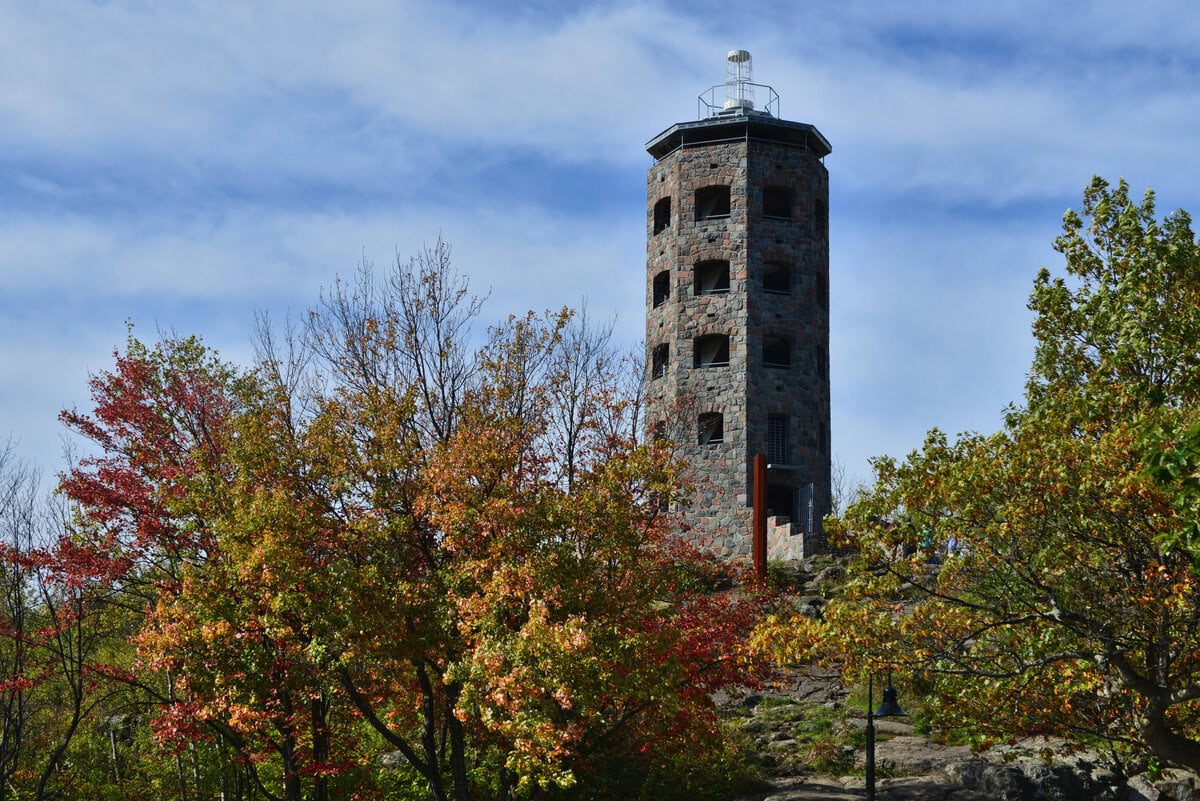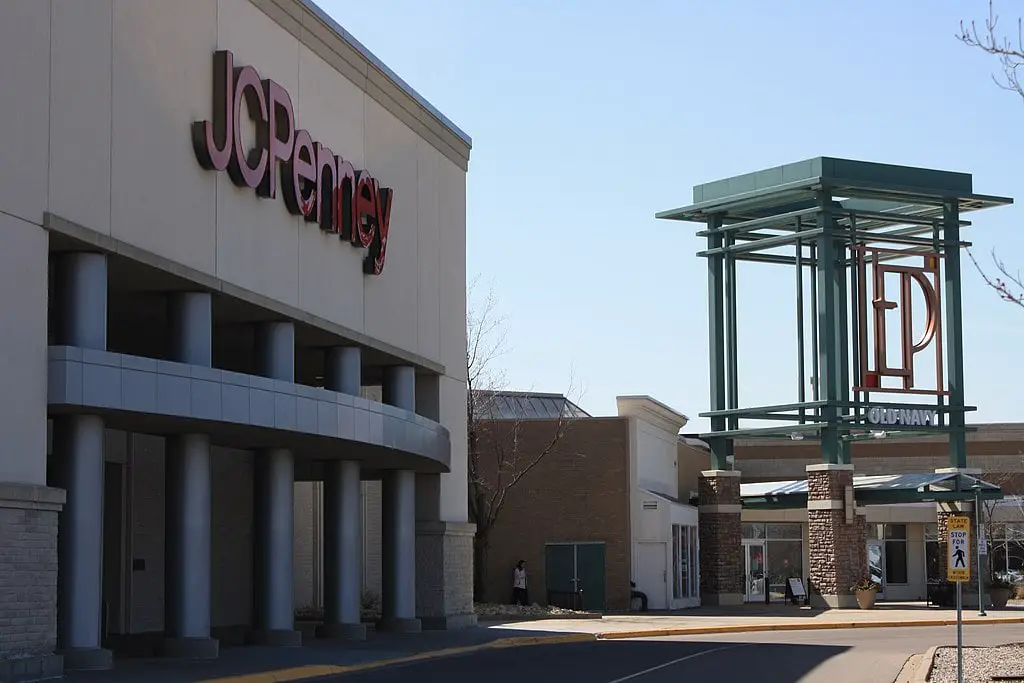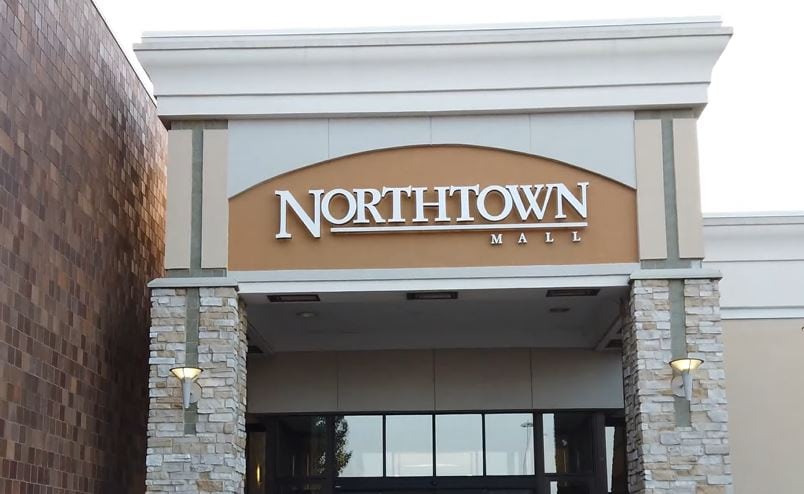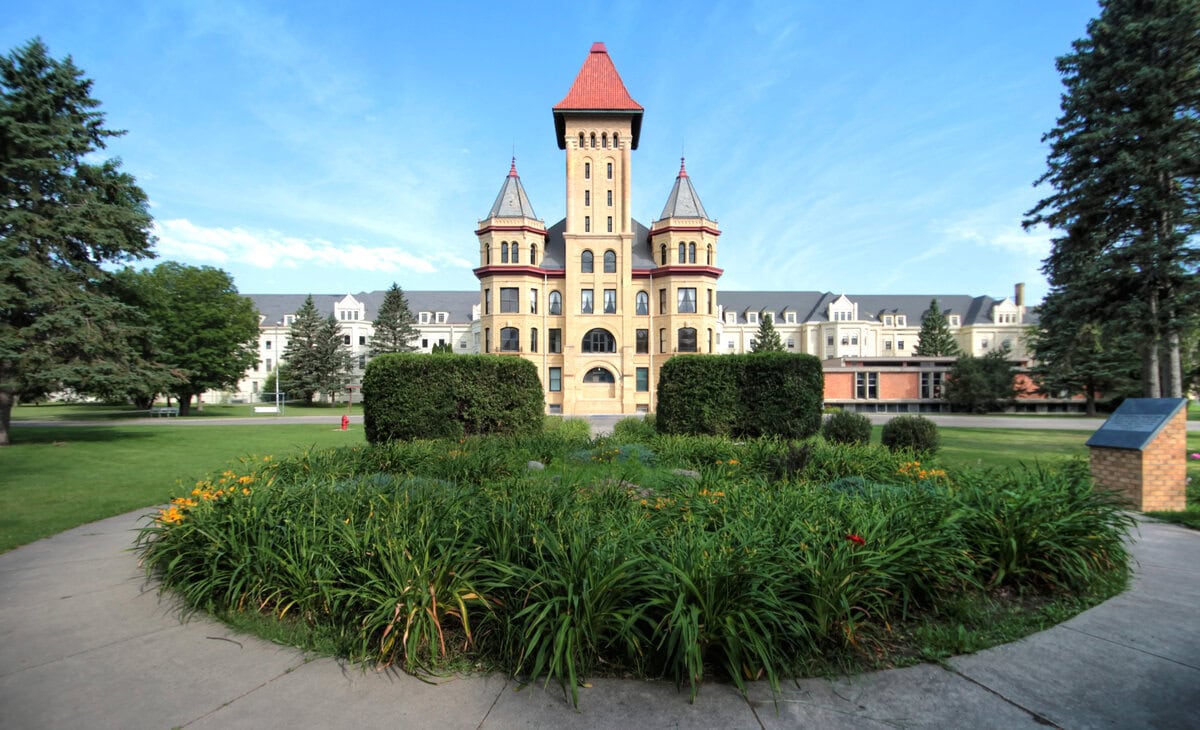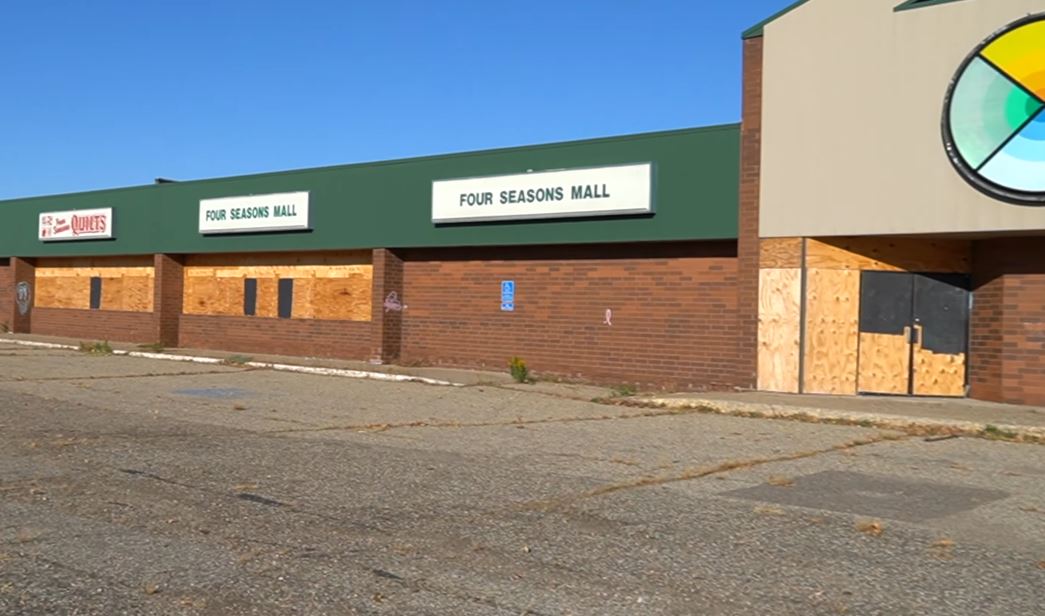Miller Hill Mall and the making of a hilltop
Before Miller Hill Mall, the heights above Duluth were more scrub and gravel pit than regional destiny. Target arrived in 1962 out on Miller Trunk Highway, and then, slowly, a highway strip began to form.
The big leap, though, took nine years of quiet work by Melvin Simon & Associates, the Indianapolis firm that decided a hilltop over Lake Superior could support a full-scale regional mall.
Architects from William Dorsky & Associates drew up the climate-controlled dream; a construction firm out of Wichita signed on as architect of record.
By the time the doors opened, on July 25, 1973, the complex held more than 663,000 square feet of retail space, parking for more than 3,000 cars, and ambitions for a 16-county, three-state trade area.
Opening day was not a modest affair. A 12-piece brass band under C. M. Schultz played "Anchor's Aweigh" as blue-and-white nautical decor, anchors and fish netting included, tried to make a hilltop feel maritime.
Mayor Ben Boo and developer Herbert Simon cut a symbolic ship's chain. Around them clustered chamber and council presidents, a reverend, and executives from Montgomery Ward, JCPenney, and Glass Block.
Then the public poured in, drawn by a 10-day festival that promised sales, a Caribbean windjammer cruise, a sailboat, and, more reliably, air conditioning.
From pasture to corridor of fluorescent light
The mall did not just open; it changed the northwest side of Duluth. Duluth Heights, which used to be partly rural, suddenly had a huge indoor main street where U.S. 53 and Trinity Road meet.
The three main stores, Montgomery Ward, JCPenney, and Glass Block, were at the corners, while about fifty smaller shops sold shoes, ice cream, pretzels, jewelry, and sometimes even an aluminum boat.
Inside, Walgreens, Maurices, Spencer Gifts, Helzberg Diamonds, and an ice-cream stand called Bresler's 33 Flavors gave the place a local, somewhat improvisational feel.
One teenager hired to scoop ice cream in 1973 would, within a year, be working at Schmitt Music and eventually managing that store, which is how a lot of Miller Hill stories go: summer job becomes working life.
Outside, the effect was bigger than just one store. Built for the whole area, Miller Hill Mall quickly became the center of a bigger shopping district.
By the late 1980s, the Sears expansion brought in another large national store, and a 1987 addition made the building even larger.
When city planners tried to measure everything, the Miller Hill shopping area had grown to about 2.16 million square feet of store space, almost 60 percent of Duluth's retail floor area, spread out around the mall like satellites.
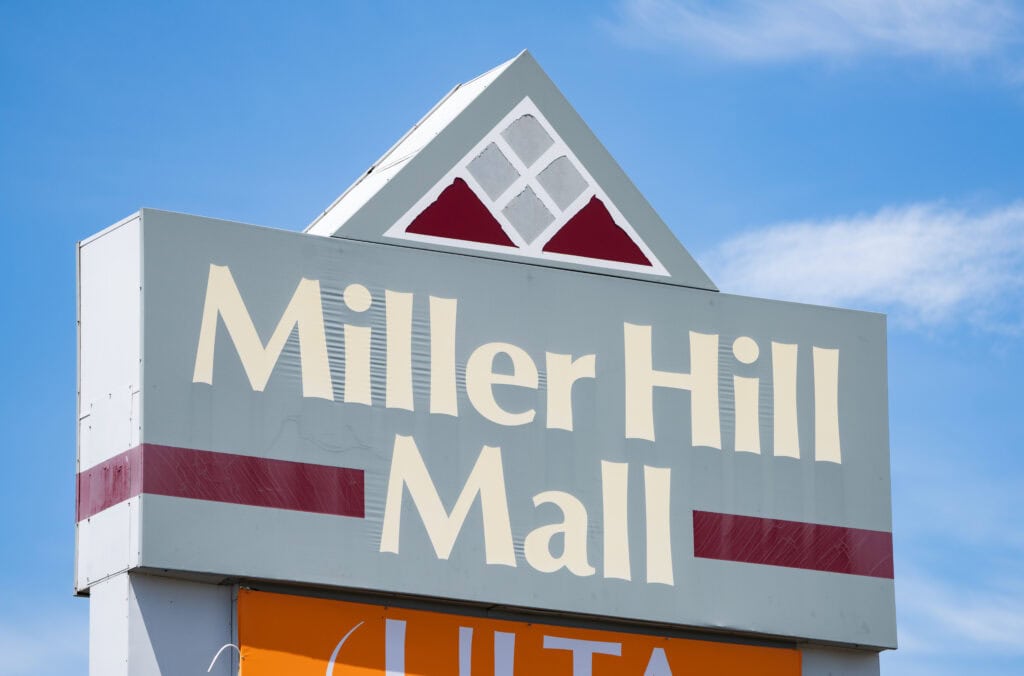
Screens, skylights, and the rituals of leisure
For a generation of Northlanders, the mall functioned as both outfitter and cinema: you bought your boots and snow shovels there, and you watched the movie about the man stomping through boots and snow.
In 1976, a three-screen United Artists theater was installed inside the complex, completing an already sealed environment into a day out.
Soft pretzels, record racks, and a first-run film awaited, all accessible without having to put your coat back on.
The mall's theater somehow endured the 1980s and 1990s, persisting while bulked-up competitors nearby multiplied their screens and took possession of every new movie as it came out.
By the end of that decade, the mall house was mostly cycling through films that had already lived one life, arriving six to twelve months after their first run, at a ticket price of two dollars.
In the end, feelings could not win over business decisions.
The theater was torn down, and the space was taken over by a local restaurant chain, Grandma's Restaurants, which first opened a Little Angie's there, then changed it again to The Great American Bar & Grill.
That also closed in 2011. Outside, the tall sign by the road that once showed movie times was fixed up and repainted, still announcing Miller Hill Mall to drivers on 53, even as what it was advertising kept changing.
New facades, new logos
The early 2000s were a big change for people who missed the old department stores. Montgomery Ward, one of the mall's first big stores, closed in 2001.
The mall brought in DSW Shoe Warehouse, Barnes & Noble, and Old Navy to fill the empty space.
These new stores sold cheap shoes, a giant selection of books, and low-cost jeans, where people used to order from catalogs.
The side of the mall facing the highway was also redone to look nicer to people driving by.
Next came the lifestyle phase. In 2007, the mall knocked down the front area by an old Walgreens and closed the hallway that used to lead there, along with some stores that were not busy.
They built a small outdoor row of stores instead, with a new entrance and shops facing the highway.
Stores like Men's Wearhouse, Noodles & Company, Chipotle, Five Guys, and AT&T opened up. Now, you could get a burger or a burrito without walking through the whole mall.
On May 24, 2010, a Culver's opened on an outparcel, adding Concrete Mixers to the region's culinary vocabulary and signaling that what happened around the mall mattered almost as much as what happened inside.
Parking lots, perpetually windy and half-frozen, had become as valuable as interior square footage.
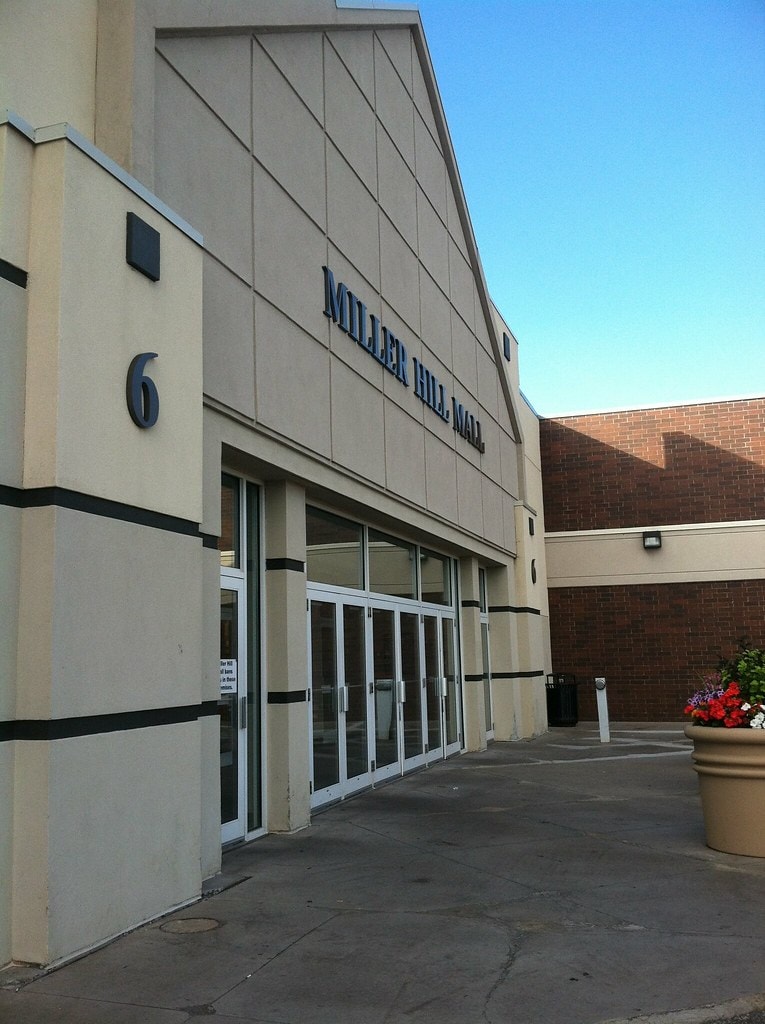
When the doctors moved in and Sears moved out
In September 2013, Dick's Sporting Goods opened, announcing itself as the new big-box athlete on the block just as Miller Hill Mall celebrated its 40th birthday.
Inside, long-time employees reminisced about the days when the mall's main competition was downtown, not the internet.
Then the older anchors began to fall. Glass Block, which had passed through a Dillard's acquisition to become Younkers, closed after its parent company went under.
Announced on April 18, 2018, the Miller Hill Younkers shut on August 29, leaving more than a hundred workers hunting for new jobs and a big, familiar box suddenly dark.
Sears, which had expanded into the mall in the 1980s, followed suit: its closure, announced May 31, 2018, took effect that September.
At that moment, only JCPenney and Dick's remained as traditional anchors.
Into that vacuum stepped Essentia Health. In 2019, the health system bought the former Younkers building, roughly 145,000 square feet, and began turning a department store into a healthcare campus.
The column spacing that once supported racks of dresses now lent itself to therapy gyms and pools. Engineers reinforced the second-story structure, boosted water and sanitary capacity, and carved in new windows.
Behind a dividing wall that separated it from the rest of the mall, Essentia installed the Center for Personal Fitness, a Therapy & Performance Center, joined by the Polinsky Medical Rehabilitation Center and the Miller Hill Clinic.
In February 2020, Essentia bought the former Sears box, about 102,000 square feet, with plans for additional services.
Surgery suites and a pharmacy took up residence near the southeast entrance, turning a onetime retail frontier into a hybrid of mall and medical hub.

Snow loads, sirens, and the hum of repair
If you build a giant box on a hill in Duluth, the sky will eventually remind you who is in charge. Like almost every enclosed mall in America, Miller Hill Mall shut down in mid-March 2020 as the pandemic hit.
When it reopened on May 18 at 11 a.m., it did so under a new set of rituals: spaced-out seating, social-distancing markers, and enhanced cleaning.
Some tenants stuck with curbside pickup for a while, testing whether shopping could survive without strolling.
Then came the winter of 2022-23, generous even by local standards. By March, Duluth had logged 116.4 inches of snow, still about 19 inches shy of a record but enough to test roofs.
On the morning of March 14, 2023, crews were shoveling accumulated snow from the mall's top when they heard an ominous series of popping noises and got off the roof.
Around 9 a.m., a section above the concourse near Applebee's, between the Caribou Coffee kiosk and Old Navy, gave way. Snow poured into the mall.
There were no injuries. Fire crews evacuated the complex, cut off gas after detecting a leak, and left engineers to figure out what, exactly, had failed.
Essentia canceled appointments for the day, and the entire property shut down while the rest of the roof was cleared and inspected.
The fitness center reopened on March 18; other tenants came back in phases.
The building got through the next winter with smaller indignities. On December 8, 2024, after rain flipped to wet snow, water leaked near a skylight by Old Navy, Barnes & Noble, and Dick's Sporting Goods.
Buckets appeared; the women's Glik's closed for a day while crews vacuumed out water, the men's shop next door stayed open, and the mall once again negotiated terms with gravity and thaw.
Kiosks, pretzels, and a still-crowded future
For all the drama in its roof and anchor boxes, Miller Hill Mall's recent life is written in smaller but telling moves.
In 2021, a Pizza Ranch with a FunZone Arcade filled a former pub space near Ulta Beauty, proof that buffet chicken and arcade tickets now count as a retail strategy.
By late 2023, national chains were still buying in: BoxLunch arrived with pop-culture merchandise, Five Below planted its flag near JCPenney, Collector's Connection leaned into collectibles, and American Eagle returned to the lineup.
In 2024, the story tilted local. Kenwood Farms took a permanent kiosk on October 1 and quickly outperformed its previous locations.
Bombshell Bridal opened in Fountain Court on October 26 with wedding and prom dresses, and Juice Pharm followed on November 1 with a juice and acai pop-up in Center Court.
Beyond the walls, Chick-fil-A opened on November 14 on the north side of the lot, joining Culver's in turning the parking perimeter into its own food district.
By fall 2025, Cinnabon had returned to Center Court, Perfumania and Windsor had joined the tenant roster, Security Jewelers had opened a new mall store, and The Wildflower Boutique had opened between American Eagle and Bath & Body Works.
Sidewalk sales, a back-to-school fashion show, and the annual Malloween trick-or-treat kept the calendar full.
With roughly 830,000 square feet, about 100 stores and services, and 11 anchor-size spaces, the hilltop mall now functions as a regional hub where retail, healthcare, and everyday errands share the same roof.

